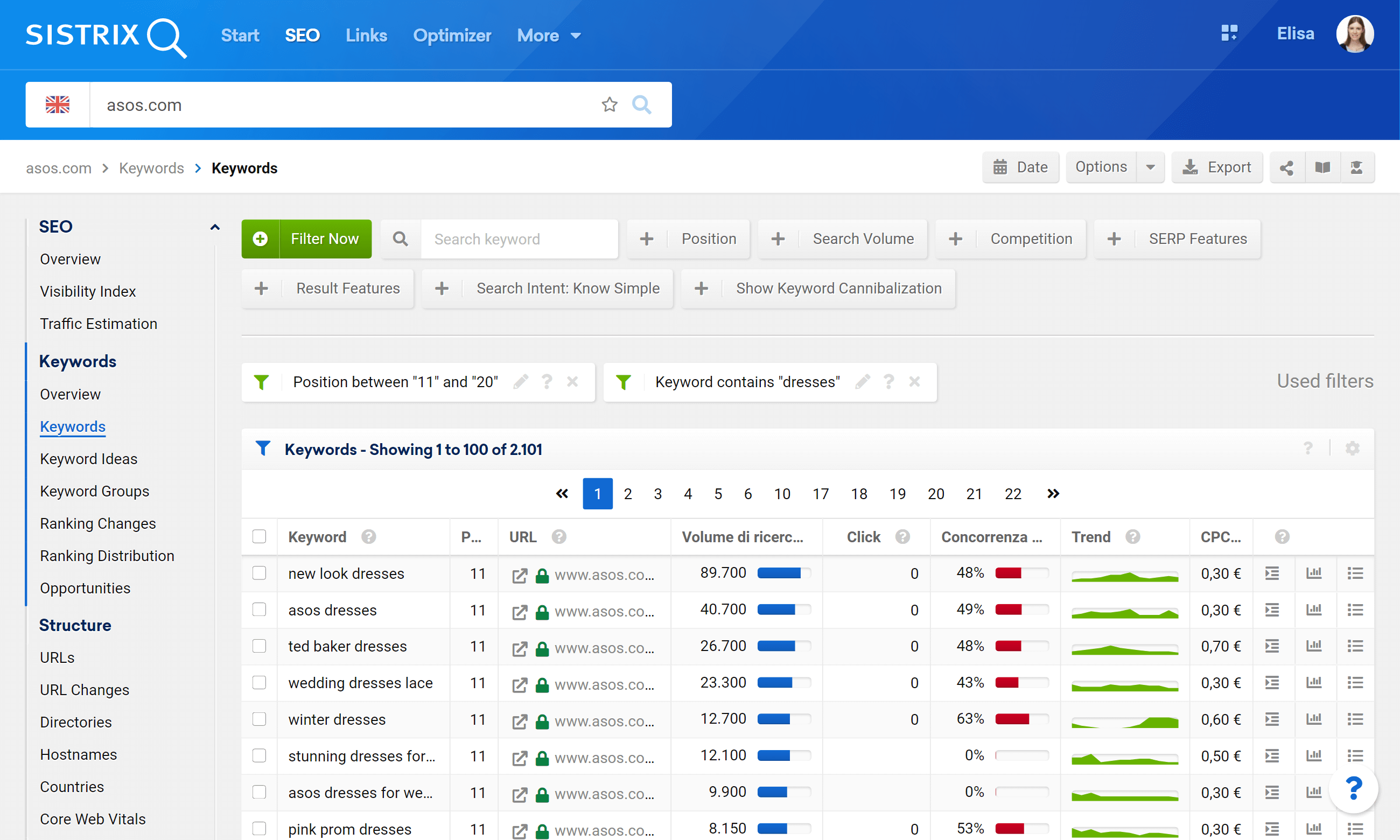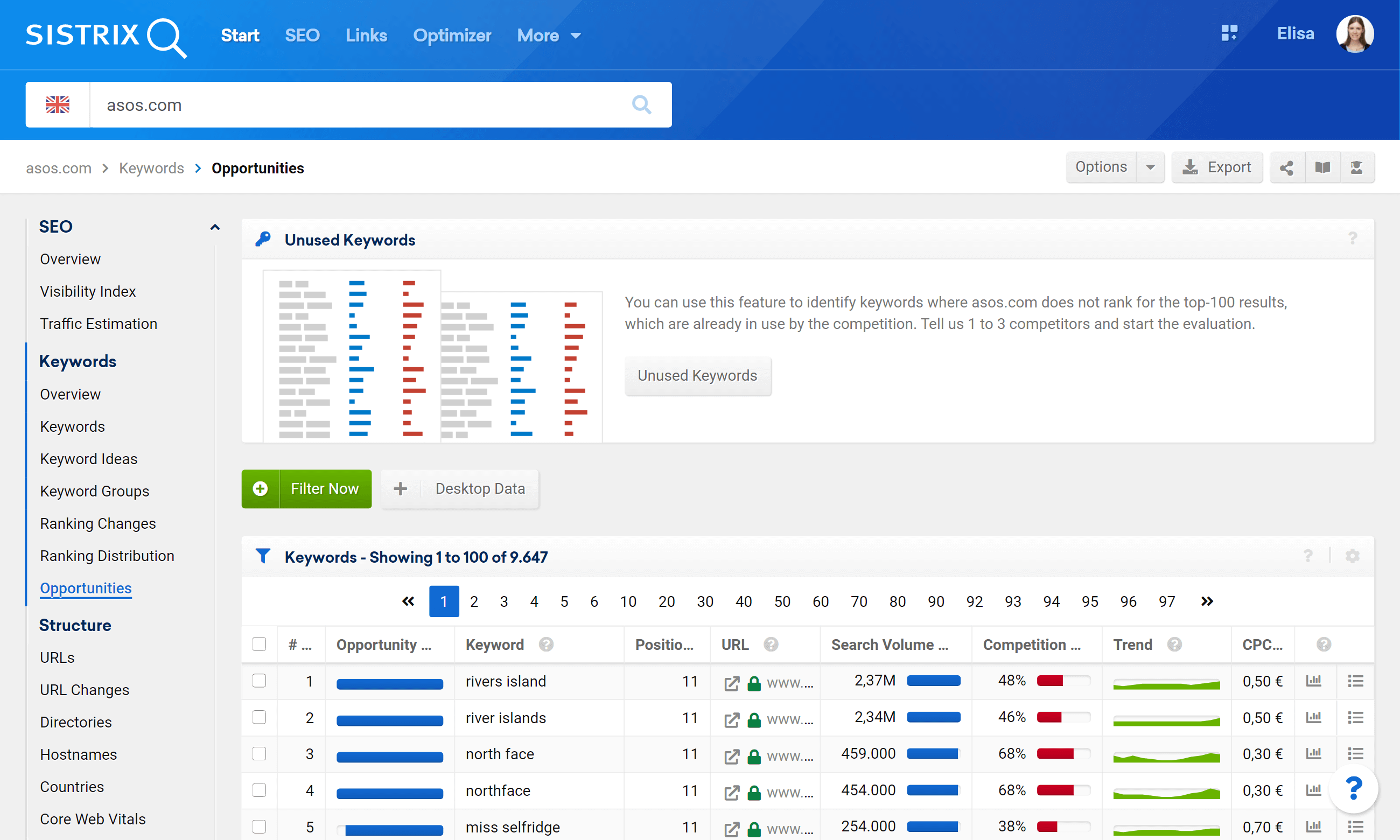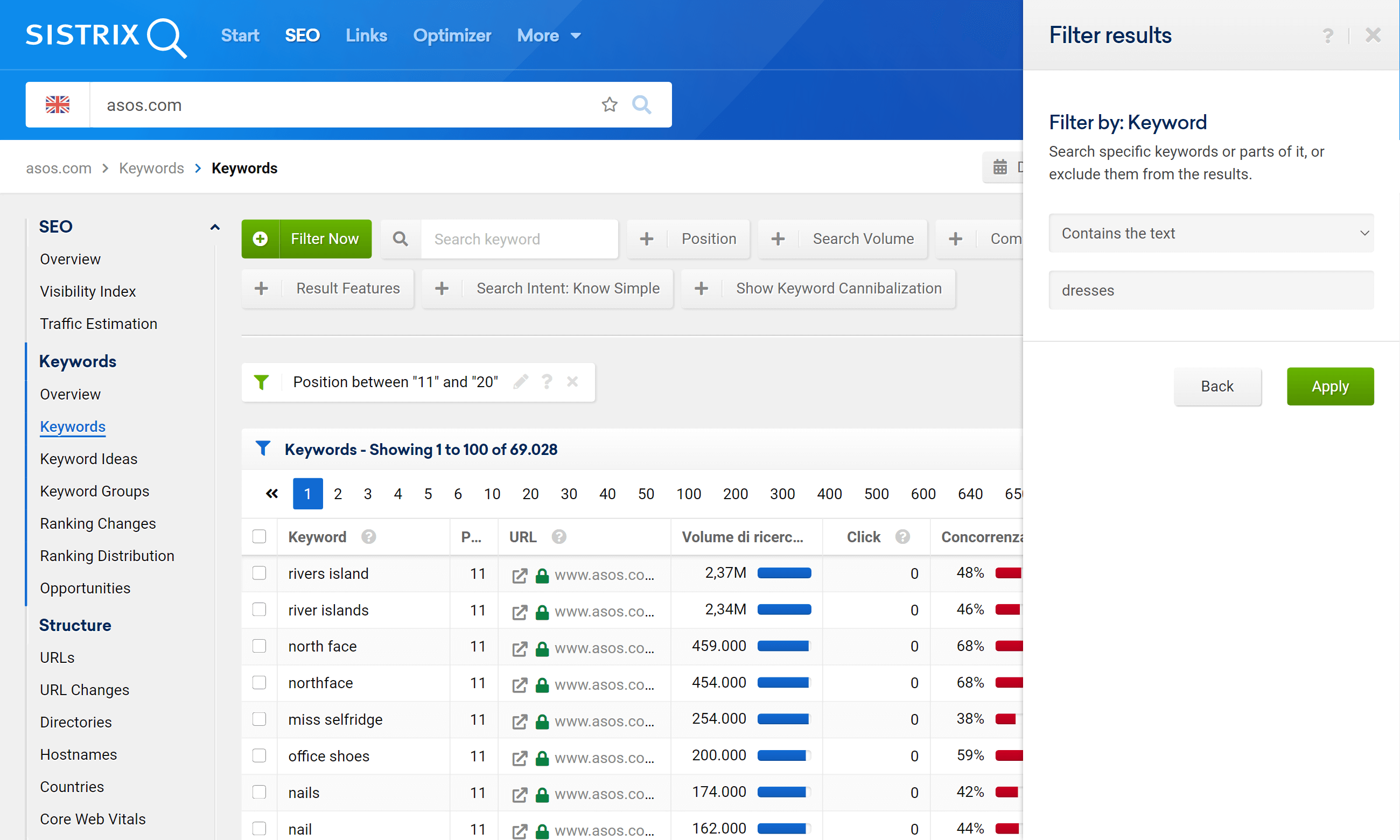Looking at your competitors is a good opportunity to find new keywords for your own website. The Toolbox offers the function “Unused Keywords” in the SEO module. If you know who your most important competitors are, you will be always be able to compare their rankings to yours.
Learn more about keyword research with SISTRIX in our detailed tutorial here.
Finding new (unused) keywords
We start by switching to a domain in the SISTRIX Toolbox – just type the domain into the search bar and hit enter 1 . Next, please click on “SEO > Opportunities” in the left hand navigation 2 and click on the button “Unused Keywords” 3. Here you will be greeted by a search mask where you can add up to three of your competitors’ domains.
What exactly does this request do?
The function “Unused Keywords” lists those keywords where your compeitors already have a ranking for in Google, but your domain does not. You can freely decide if you want to limit the search to the Top-10 or -20 results or if you want to get results for all Top-100 keywords.
Please note that if you type in two or three competitors, we will only show the keywords where all domains have a ranking. Therefore, the more competitors you add, the less will likely be displayed. If only one competitor is typed in, we will show all rankings that they have, which you are missing.
Now we will start our own search on the assumption that we are asos.com.
For our tutorial domain we now queried the Top-10 rankings on Google.com for two competitors. The Toolbox will show the results right away.
The table shows you, amongst other things, that debenhams.com ranks on position 2 for the search phrase “white dresses” and boohoo.com on position 3 on Google. Our domain example asos.com does not have any rankings withiin the Top-10, though they may actually rank within the Top-100. You could check this on “SEO > Keywords”.
You will now have to check the list and decide individually on the value that each keyword could have for your domain. If Asos does not offer white dresses, then this keyword would not be very valuable.
If there are too few results, you can remove one competitor from the list. Then new suggestions will then be calculated based on only two or maybe one competitor.
Tip: keep positions 11 to 20 in mind
Besides looking at the “Unused Keywords”, it is always wise to look at existing rankings for your own website. Especially important are the positions 11 to 20, as we call these keywords “threshold-keywords”.
In the SEO module you just click on “SEO > Keywords”. On this page you have a filter function on top of the table where you can add a “Position” filter, which you set to the values 11 to 20.
If you want to, you can also combine additional filters. A good combination would be a keyword filter in addition to the position 11-20 filter. As an example you could display all phrases for asos.com, for which the domain ranks on position 11 to 20 and which contain the word “dresses”.
The result:

Tip: Keywords which already have a good ranking (page 2) can often be pushed to the first page by improving the internal optimization. Also structured content on the specific page would be an option.





